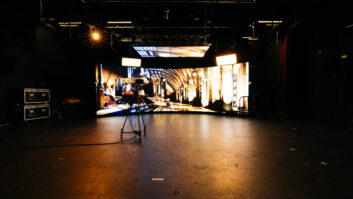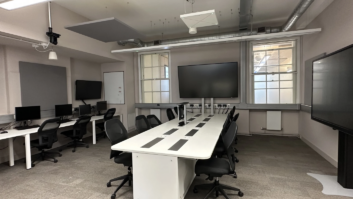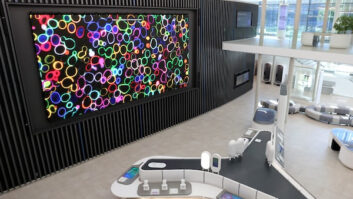Research from Sony Professional Displays and Solutions Europe has revealed the chasm between the growing demand for hybrid flexible learning (HyFlex) and the lack of preparedness to enable its adoption across Europe. The Sony State of Learning Report 2023 says that 71% of students and teachers are positive to HyFlex, but 67% of AV professionals in higher education institutions say there is either some or a lot of technological improvement needed before it can be achieved.
Sony, in tandem with Censuswide, surveyed 1,800 students, teachers, and AV professionals in higher education across Europe (UK, France, Germany, Italy, Denmark, and Sweden) about their attitudes towards different methods of learning and the future of education.
With only a quarter of students in Europe currently using this learning model, technological immaturity is stunting the progress of implementing it, says the research. Institutions need to arm themselves with the right resources, training, and technologies to unlock the host of advantages that come with a more blended learning model.
 The Covid pandemic changed the education landscape permanently. Higher education institutions were forced to find alternative ways to teach, leaning heavily on online methods to educate students in disparate locations. This ultimately made learning more accessible to a broader range of students, and according to promising recent stats from UCAS, more students from disadvantaged backgrounds entered university last September.
The Covid pandemic changed the education landscape permanently. Higher education institutions were forced to find alternative ways to teach, leaning heavily on online methods to educate students in disparate locations. This ultimately made learning more accessible to a broader range of students, and according to promising recent stats from UCAS, more students from disadvantaged backgrounds entered university last September.
Against this backdrop, how prepared are universities to create a learning environment fit for purpose today, that caters to the changing demands and needs of a more diverse student body?
Overall, there was a larger appetite for more asynchronous classes (62%), compared to in-person (56%) and synchronous online learning (52%). What’s more, two-thirds of students and teachers surveyed agreed that a hybrid flexible learning model, when done right, creates a learning environment better suited to varied learning styles. However, there are significant barriers in the way.
Over half (51%) of AV professionals say that a lack of understanding from teachers in how to use the required technology is a big barrier to implementing this model. And 35% of teachers agree. This highlights a lack in appropriate education tech, requiring more user-friendly solutions in this space to enable students to reap the benefits of HyFlex learning with easy, intuitive tech. The other main barriers cited are:
• Limited resources
• Institutions have other priorities
• Lacking budget
The future of Hyflex seems promising, with 62% of students claiming that this model benefits their learning experience in the following ways:
• Managing learning alongside other responsibilities
• A greater choice of courses to attend
• Better access to materials for revision or missed information
Yet, students themselves also have barriers to contend with when it comes to accessing this new way of learning. Getting the right technological equipment may be one of the biggest pitfalls for widespread adoption of a HyFlex learning model, alongside difficulties using the technology, and a reduced opportunity for social interaction.
 “It’s clear from the data that there is still work to be done in ensuring Europe’s higher education institutions can meet the growing demand for the HyFlex learning model,” said Alexandra Parlour, European marcoms & education segment marketing manager, Sony Professional Displays and Solutions. “With the right technology and proper prioritisation, there are real and tangible benefits that could be reaped from offering this blended learning experience.
“It’s clear from the data that there is still work to be done in ensuring Europe’s higher education institutions can meet the growing demand for the HyFlex learning model,” said Alexandra Parlour, European marcoms & education segment marketing manager, Sony Professional Displays and Solutions. “With the right technology and proper prioritisation, there are real and tangible benefits that could be reaped from offering this blended learning experience.
“While the research reveals an appetite for a combination of learning methods, it also highlights that online learning isn’t replacing on-site experiences, so universities need to be looking at what audio visual technology to implement that will support all learning styles and bolster the productivity, collaboration, and engagement of their students.”
To download the full Sony State of Learning Report 2023, click here.







